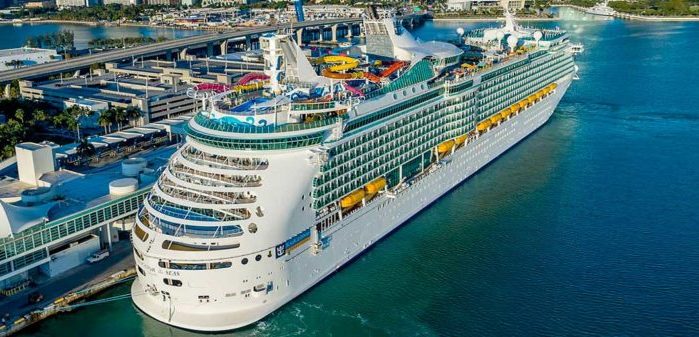Cruise operator RCL, Wärtsilä, and DNV GL announced that Navigator of the Seas will feature the industry’s first fire prevention notation. The class notation F(M-P) identifies key areas for preventing fires in engine rooms based on incident analysis, feedback from surveyors, and best practices from the industry.
Since 2016, the three partners have collaborated with stakeholders to collect data, analyse the key risks, and develop safety barriers to manage the most significant risk factors. As a result, RCL initiated a program to improve engine room fire prevention across its entire fleet and Wärtsilä offered technical solutions and procedures for the maintenance of their engines to lower fire risk. DNV GL has also introduced a new class notation F(M-P), focusing not only on the systems, but the processes and people to improve the main safety barriers to prevent fires in machinery spaces.
[smlsubform prepend=”GET THE SAFETY4SEA IN YOUR INBOX!” showname=false emailtxt=”” emailholder=”Enter your email address” showsubmit=true submittxt=”Submit” jsthanks=false thankyou=”Thank you for subscribing to our mailing list”]
The new DNV GL class notation F(M-P), will be implemented in RCL’s new cruise vessel Navigator of the Seas. It identifies key areas for preventing fires in engine rooms based on incident analysis, feedback from surveyors, and best practices from the industry. It also establishes standards and processes aiming to prevent, detect and contain oil leakage, the shutdown of system, and the prevention of ignition.
Talking about the class notation, Anders Aasen, VP of Global Technical Solutions at RCL, said that the goal is zero engine room fires and with these enhanced standards, he believes this goal is within reach.
The creation of the 150°C design has its roots in the safety charrette held three years ago, where we worked on ideas for increasing safety in the cruise industry. Developing a successful SOLAS compliant product is a result of numerous design improvements
Jyrki Salo, Senior Product Manager (SOLAS) at Wärtsilä, mentioned.
Moreover, Knut Ørbeck-Nilssen, CEO of DNV GL – Maritime, informed that the notation covers not just the technical systems, but the processes used and the people involved, using best practices to provide a holistic approach to preventing these incidents.
As casualty statistics show, many engine room fires take place when flammable liquid reaches a hot surface. For this reason, the notation introduces process checks and technical measures to prevent this from happening.
Furthermore, likely areas for leakage are identified, and containment strategies for such areas offered. Additionally, control and monitoring of vibration in essential systems is an added requirement, with data collection included to show trends over time.
Insulation of possible hot surfaces is also crucial to prevent ignition, so maintenance activities in this area are a priority.
Finally, the requirement for continuous improvement via data analytics means that owners and operators can benefit from the processes and systems they put in place to prevent fires.






























































